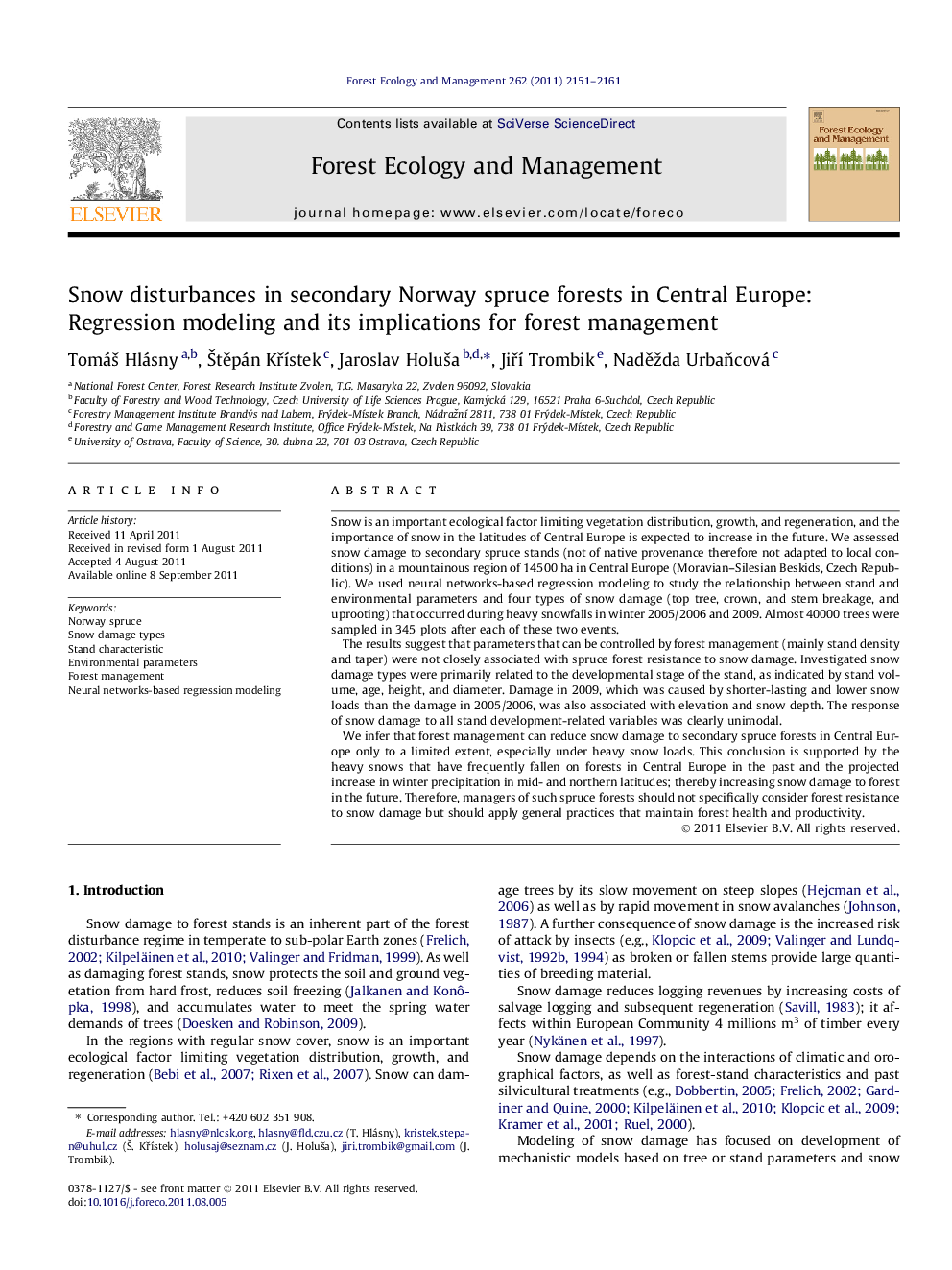| کد مقاله | کد نشریه | سال انتشار | مقاله انگلیسی | نسخه تمام متن |
|---|---|---|---|---|
| 87802 | 159267 | 2011 | 11 صفحه PDF | دانلود رایگان |

Snow is an important ecological factor limiting vegetation distribution, growth, and regeneration, and the importance of snow in the latitudes of Central Europe is expected to increase in the future. We assessed snow damage to secondary spruce stands (not of native provenance therefore not adapted to local conditions) in a mountainous region of 14500 ha in Central Europe (Moravian–Silesian Beskids, Czech Republic). We used neural networks-based regression modeling to study the relationship between stand and environmental parameters and four types of snow damage (top tree, crown, and stem breakage, and uprooting) that occurred during heavy snowfalls in winter 2005/2006 and 2009. Almost 40000 trees were sampled in 345 plots after each of these two events.The results suggest that parameters that can be controlled by forest management (mainly stand density and taper) were not closely associated with spruce forest resistance to snow damage. Investigated snow damage types were primarily related to the developmental stage of the stand, as indicated by stand volume, age, height, and diameter. Damage in 2009, which was caused by shorter-lasting and lower snow loads than the damage in 2005/2006, was also associated with elevation and snow depth. The response of snow damage to all stand development-related variables was clearly unimodal.We infer that forest management can reduce snow damage to secondary spruce forests in Central Europe only to a limited extent, especially under heavy snow loads. This conclusion is supported by the heavy snows that have frequently fallen on forests in Central Europe in the past and the projected increase in winter precipitation in mid- and northern latitudes; thereby increasing snow damage to forest in the future. Therefore, managers of such spruce forests should not specifically consider forest resistance to snow damage but should apply general practices that maintain forest health and productivity.
► Relationship between environmental parameters and four types of snow damage to secondary Norway spruce (Picea abies (L.) Karst.) stands were investigated using neural networks.
► Four characteristic associations between snow damage and explanatory variables were identified.
► Forest management can reduce snow damage to secondary Norway spruce forests in Central Europe only to a limited extent.
► We suggest not to consider the resistance of such forests to snow damage in forest management.
► General practices that maintain forest health and productivity should be applied.
Journal: Forest Ecology and Management - Volume 262, Issue 12, 15 December 2011, Pages 2151–2161